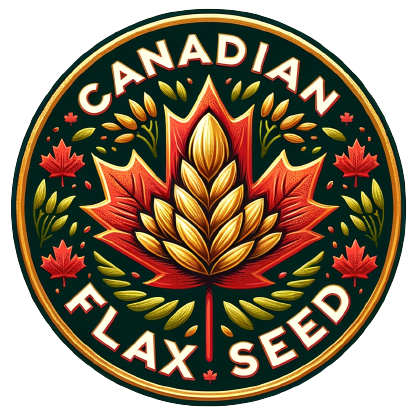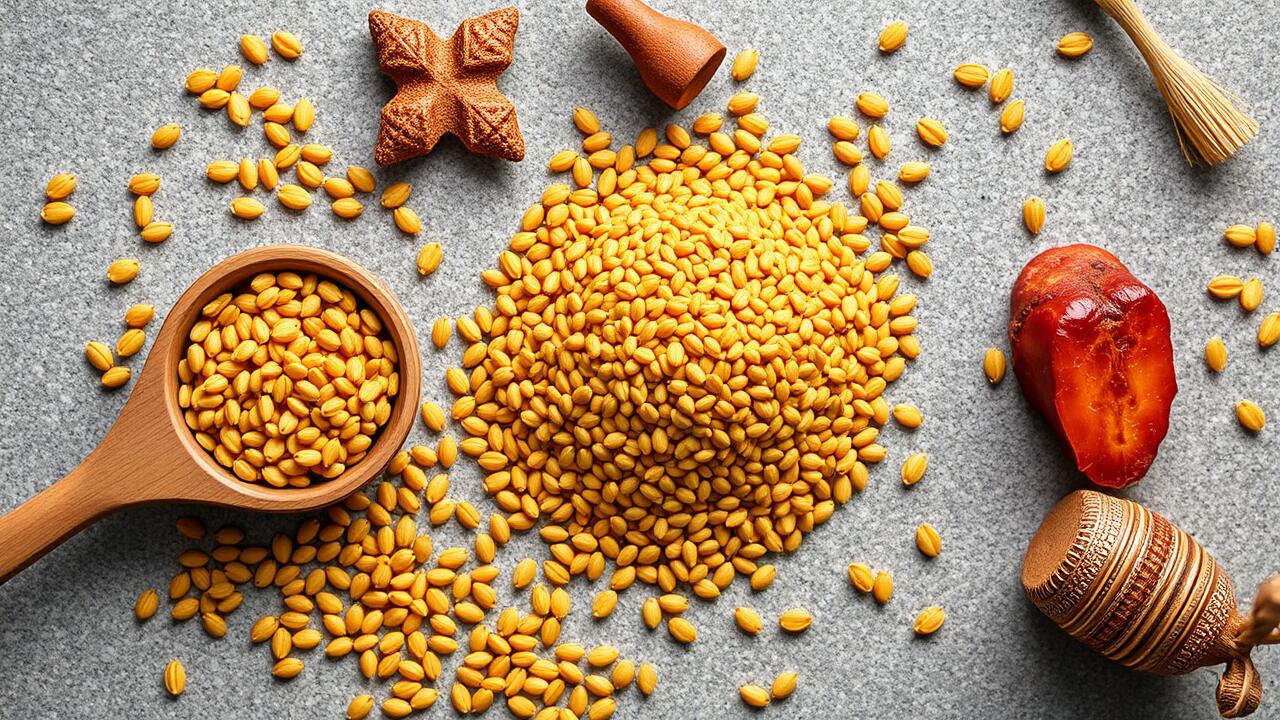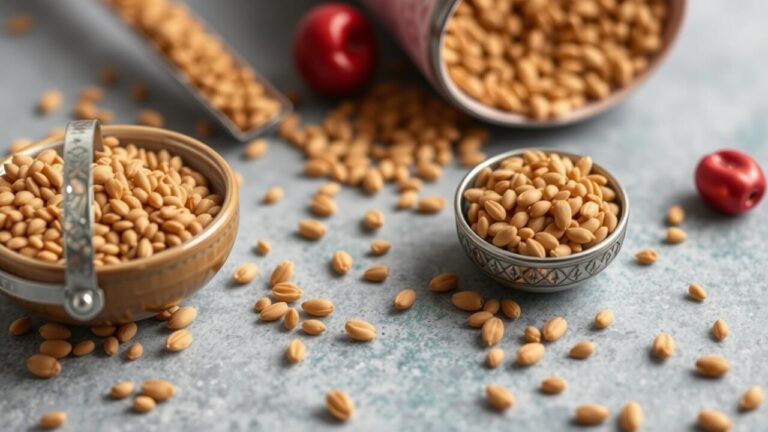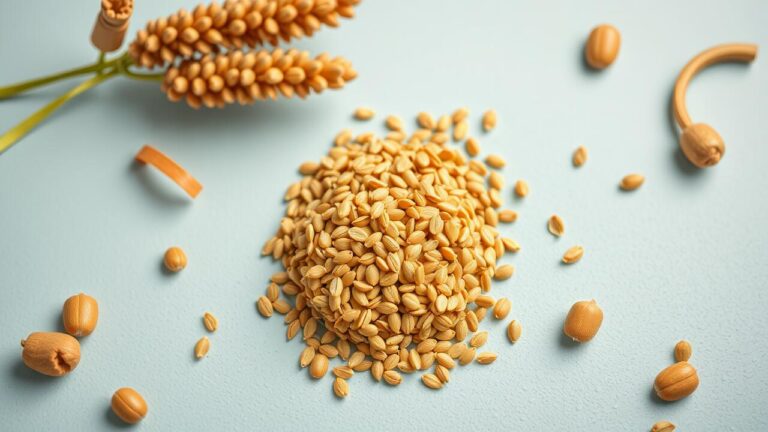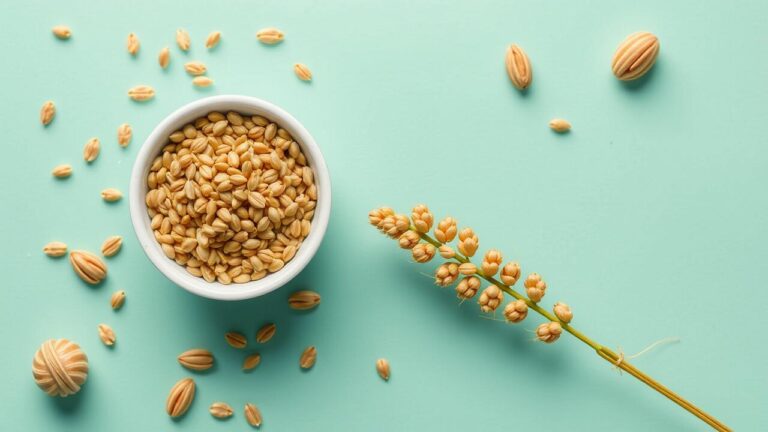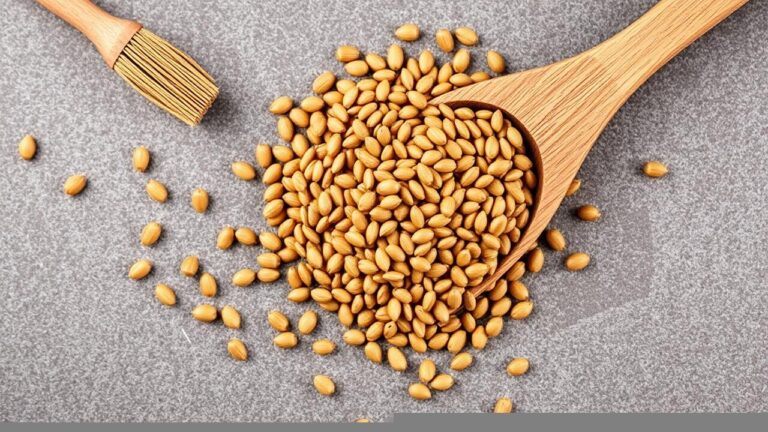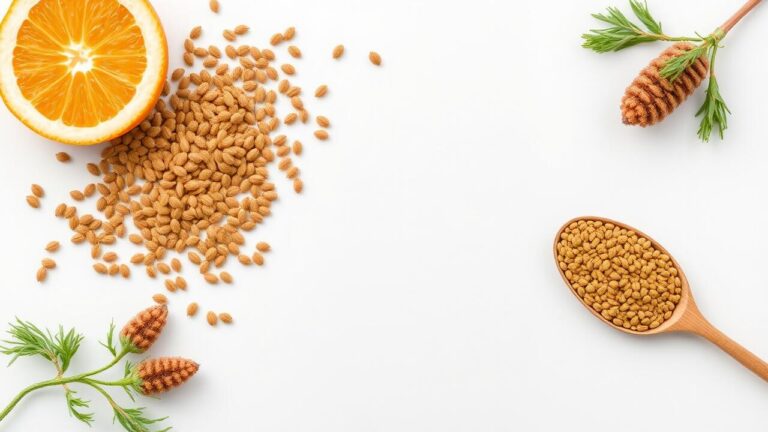Discover Canadian Golden Flaxseed
Flaxseed—oh, the tiny powerhouse! It’s hailed for its remarkable contribution to digestive health, and let’s not overlook that high fiber content it boasts. Picture this: a delightful blend of soluble and insoluble fibers dancing together in your gut. Soluble fiber? It morphs into this gel-like substance, slowing down the food parade and leaving you feeling satisfyingly full. Then there’s its counterpart, insoluble fiber—this one rolls up its sleeves and adds some serious bulk to your stool, making sure everything glides smoothly through those winding intestines.
But wait! There’s more! Adding flaxseed to your daily fare might just be the secret handshake with beneficial gut bacteria you’ve been looking for. With lignans and antioxidants strutting their stuff, they help cultivate a balanced microbiome—a true hero when it comes to digestion’s delicate dance. Regularly munching on flaxseed could ease those pesky gastrointestinal woes while also putting inflammation in check within your digestive tract. All these fabulous qualities elevate flaxseed from mere food item to functional superstar in maintaining peak digestive performance!
How Flaxseed Aids Digestion
Flaxseed—oh, the marvel it holds! Bursting with both soluble and insoluble fiber, this little powerhouse is a champion in the realm of digestive health. Soluble fiber? It’s like a sponge, soaking up water to create a gel-like concoction that softens stool—think of it as nature’s lubricant for an easier journey through your system. Then there’s insoluble fiber, which steps in to add bulk and structure, ensuring those bowels keep on moving regularly while warding off constipation’s unwelcome grasp. Together, they cultivate an inviting haven for a thriving gut ecosystem—all hail the beneficial bacteria!
But wait—there’s more! Flaxseed isn’t just about fiber; it’s also packed with lignans and omega-3 fatty acids that might just take digestive function up another notch. Lignans work their magic as prebiotics, nurturing good bacteria like a warm hug from Mother Nature herself. And let’s not forget omega-3s—they swoop in to combat inflammation within the digestive tract, potentially soothing gastrointestinal woes and ushering in feelings of comfort throughout your belly. So why not toss some flaxseed into your daily meals? It’s a simple tweak that could yield powerful benefits for your digestive harmony!
| Component | Function | Health Benefits |
|---|---|---|
| Soluble Fiber | Absorbs water and forms gel-like substance | Softens stool and eases passage through the digestive tract |
| Insoluble Fiber | Adds bulk to stool | Promotes regular bowel movements and prevents constipation |
| Lignans | Prebiotic effect | Nurtures beneficial gut bacteria |
| Omega-3 Fatty Acids | Reduces inflammation | Soothes gastrointestinal discomfort |
Environmental Impact of Flaxseed Farming
Flaxseed farming unfurls a captivating narrative in the realm of sustainable agriculture, boasting an impressively low environmental footprint. This remarkable plant demands relatively scant amounts of water and fewer pesticides than many conventional crops, weaving its roots deep into the earth—a characteristic that not only curbs soil erosion but also nurtures biodiversity by inviting beneficial insects and organisms to thrive within farming ecosystems.
To truly unlock the potential of flaxseed cultivation, embracing eco-friendly farming practices is paramount. Farmers are increasingly turning to crop rotation strategies that enrich soil nutrient profiles while simultaneously slashing reliance on chemical fertilizers. Meanwhile, organic flax farming is riding a wave of popularity, resonating with consumers’ growing desire for sustainable products—all while diminishing adverse environmental effects. Together, these practices amplify the resilience of agricultural systems and forge a path toward a more sustainable food supply chain—one that echoes with promise amidst an ever-evolving landscape.
Sustainable Practices in Canadian Agriculture
In the vibrant tapestry of Canadian agriculture, farmers are weaving together a rich array of sustainable practices that breathe new life into flaxseed cultivation. Picture this: crop rotation dances across fields, a rhythmic technique that not only nurtures soil health but also keeps pests at bay like an invisible guardian. By interspersing flaxseed with other crops, these diligent stewards of the land deftly stave off nutrient depletion and lessen their dependence on chemical fertilizers—an elegant balance in nature’s grand design.
But wait! The saga doesn’t end there; enter no-till farming methods, rising in popularity like a phoenix from the ashes. These techniques serve as protectors against soil erosion while coaxing moisture to linger longer within the earth’s embrace. With each passing season, such strategies fortify the long-term sustainability of agricultural lands while still yielding bountiful harvests—an impressive feat indeed!
And then there’s the ingenious integration of cover crops—a cornerstone in sustainable agriculture that resonates deeply throughout Canada’s flaxseed industry. Imagine lush greenery blanketing fields during fallow periods, thwarting soil erosion and silencing weeds until it’s time for planting once more. As these hardy plants decompose, they shower organic matter upon the soil—a nourishing gift that enriches its fertility and vitality.
Farmers are increasingly embracing this botanical symphony by cultivating diverse plant species on their farms. This commitment not only bolsters local ecosystems but also enhances resilience against the whims of climate change—an insurance policy for future generations poised to continue carrying forth the legacy of flaxseed production into an uncertain tomorrow.
- Implementing integrated pest management to reduce reliance on synthetic pesticides.
- Utilizing precision farming technologies to optimize resource use and minimize waste.
- Adopting agroforestry practices that combine agriculture with tree cultivation for carbon sequestration.
- Engaging in water conservation strategies such as drip irrigation to enhance water efficiency.
- Supporting organic farming initiatives that prioritize natural inputs and processes.
- Participating in community-supported agriculture (CSA) programs to foster local food systems.
- Educating farmers and communities about the benefits of sustainable practices through workshops and outreach.
Economic Importance of Flaxseed
Flaxseed has burst onto the scene as a pivotal crop within Canada’s agricultural tapestry, weaving itself into the very fabric of the economy. This remarkable seed, with its myriad uses, not only enriches the land but also provides farmers an enticing alternative to traditional crops—one that glimmers with high-value potential. As the global appetite for nutritious food alternatives swells, flaxseed production is surging ahead like a tidal wave, showering economic rewards upon those engaged in its cultivation, processing, and distribution. The ripple effects are felt far and wide: rural economies thrive while jobs sprout up across diverse sectors—from farming fields to bustling manufacturing plants and vibrant retail spaces.
But wait—there’s more! The export of Canadian flaxseed doesn’t just nudge the national economy; it propels it forward with gusto! Canada stands tall among global exporters of this sought-after commodity, carving out an advantageous niche in international markets where health-centric products reign supreme. Yet these benefits weave deeper than mere transactions; they lay fertile ground for innovation in food technology and product development. Companies are enthusiastically diving into exploration mode when it comes to flaxseed’s myriad possibilities—crafting an array of value-added goods that not only amplify its economic impact but also pave pathways toward sustainability well into tomorrow’s horizon.
Contribution to the Canadian Economy
Flaxseed production stands as a cornerstone of the Canadian agricultural landscape, weaving itself intricately into the fabric of both the economy and job generation. Canada proudly claims its status as one of the world’s foremost producers, with sprawling fields stretching endlessly under vast skies dedicated to this golden crop. The industry is a lifeline for farmers—providing them direct income through sales while indirectly fueling a network of economic activities tied to processing, transportation, and exportation.
But wait! Flaxseed isn’t just about economics; it’s carving out a reputation for its remarkable nutritional perks, boosting its market value and igniting consumer demand like never before.
The flaxseed market has exploded beyond traditional realms—it’s not merely an ancient staple anymore! We’re witnessing innovation flourish, giving rise to products such as luxurious flaxseed oil and trendy health supplements that capture attention. This surge in variety breathes resilience into the agricultural economy as producers eagerly venture down fresh paths toward profitability.
Moreover, investments in research and development are lighting up new possibilities within flaxseed applications—creating rippling opportunities not only for hard-working farmers but also for dynamic businesses nestled in food production and health sectors alike. It’s a thrilling evolution unfolding right before our eyes!
Flaxseed Storage and Shelf Life
Storing flaxseed properly is crucial if you want to keep its nutritional punch and delightful flavor intact. Whole flaxseeds boast a longer life span than their ground counterparts, thanks largely to that sturdy hull which acts as a shield against the pesky forces of oxidation threatening those precious fatty acids. Tucked away in a cool, dark nook, these whole seeds can endure for nearly a year! But beware—the same cannot be said for ground flaxseed. It demands more vigilance: stow it in an airtight container within the chilly embrace of your refrigerator or freezer to fend off light and air exposure, thereby extending its freshness significantly.
Keeping tabs on your flaxseed’s shelf life means being on the lookout for telltale signs of spoilage—any hint of an off-putting or rancid odor, or shifts in texture should raise red flags. The packaging also wields significant influence; vacuum-sealed options can work wonders by restricting oxygen’s unwelcome presence. A smart move? Labeling your containers with purchase or grinding dates helps navigate usage like a pro! By following these savvy storage tips, you’ll not only safeguard all those health benefits but also ensure that every sprinkle adds optimal flavor to your culinary creations!
Best Practices for Maximizing Freshness
To maintain the vibrant freshness of flaxseed, one must embrace proper storage techniques—essential, indeed! Think airtight containers: these little guardians shield against moisture and air’s relentless assault, which can lead to spoilage faster than you can say “nutrient loss.” A cool, dry sanctuary is paramount for storage; temperatures ideally flirt between 32°F and 68°F. And let’s not forget about the fierce enemy of rancidity: direct sunlight—steer clear of it to preserve both flavor and those precious nutritional qualities.
Now, when we talk about ground flaxseed? Ah, that’s a different story altogether! Its shelf life shrinks like a wool sweater in hot water due to its increased surface area that invites oxidation with open arms. For peak potency, it’s best consumed within weeks post-grinding. But fear not if you wish to stretch that lifespan! Freezing ground flaxseed in small airtight containers works wonders—it’s like putting your seeds into hibernation mode—and can vastly prolong their freshness alongside their health-boosting benefits. This way, you’re guaranteed all the nutrient-dense goodness this marvelous seed has to offer!
Research and Innovations in Flaxseed Uses
Recent studies have burst forth with a cornucopia of groundbreaking uses for flaxseed, especially in the vibrant world of health and nutrition. Bursting with omega-3 fatty acids, lignans, and dietary fiber galore, flaxseed is under scrutiny for its promising role in quelling inflammation, bolstering heart health, and nurturing digestive wellness. Scientists are delving into its capacity within functional foods—an endeavor aimed at elevating the nutritional profiles of our everyday staples. This quest paves the way toward fortified products designed to empower consumers in their pursuit of optimal dietary balance.
But wait—there’s more! Beyond the realm of health benefits lies a treasure trove of versatility that researchers are uncovering in both cosmetic and agricultural landscapes. Investigations into flaxseed oil have illuminated its prowess as a natural moisturizer and an anti-aging marvel within skincare concoctions. Meanwhile, innovations sprouting from bioplastics and sustainable materials harness flaxseed’s innate qualities, solidifying its place in the pantheon of eco-friendly product development. These strides underscore flaxseed’s multifaceted potential that transcends traditional culinary applications while shining brightly on today’s research stage.
Emerging Trends in Health and Nutrition
Recent investigations have begun to shine a brilliant light on the myriad health perks of flaxseed, thrusting this unassuming little seed into the limelight of nutrition science. It’s gaining notoriety for its abundant omega-3 fatty acids, fiber galore, and beneficial lignans—all of which harmonize beautifully with cardiovascular well-being and cholesterol regulation. Meanwhile, groundbreaking studies are delving into flaxseed’s potential anti-inflammatory traits, hinting that making it a regular part of your diet could be key in fending off chronic illnesses.
But wait—there’s more! Beyond its age-old applications, flaxseed is weaving itself into an array of health products—think functional foods and dietary supplements aplenty. Brands are now infusing flaxseed into everything from protein bars to smoothies and even baked delights, broadening its appeal among those who prioritize their health. And let’s not overlook how the surge in plant-based diets is propelling demand skyward: here lies a budget-friendly source brimming with essential nutrients that champions overall wellness!
Conclusion
The myriad advantages of Canadian golden flaxseed weave a complex tapestry that stretches far beyond individual wellness, reaching into the realms of economic vitality and environmental sustainability. Bursting with nutrients, this little seed emerges as a powerhouse for digestive health—a must-have in any well-rounded diet.
Yet there’s more! The eco-friendly farming methods that underpin flaxseed cultivation not only nurture the land but also provide a significant boost to Canada’s economy. As investigations delve deeper into groundbreaking uses for flaxseed, its potential to transform nutrition and various sectors glimmers on the horizon, brimming with promise.
